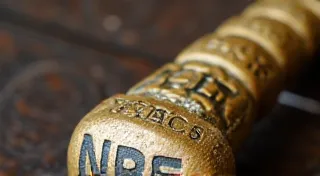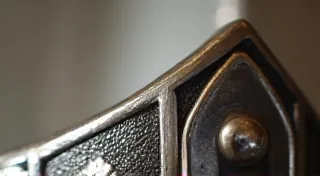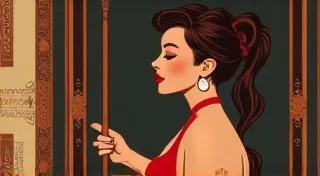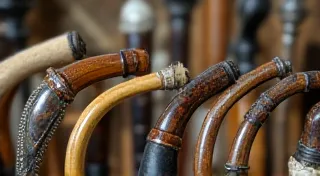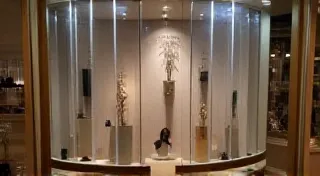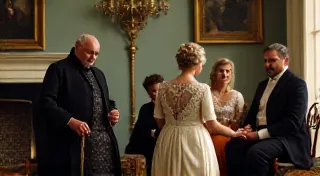The Shoehorn and the Opera Box: A Luxurious Pairing
For the modern collector, a vintage shoehorn might seem like a quirky, almost forgotten object. But in the late 19th and early 20th centuries, these elegant tools were essential accessories for women of means, particularly those attending the opera, balls, and other high-society events. Far from a mere functional item, the shoehorn became an extension of a woman's style, reflecting her status and sophistication. This article explores the fascinating connection between vintage shoehorns and the world of opera and high society, illuminating why these seemingly humble objects are now prized collectibles.
The Opera’s Demands: Footwear and Fashion
To understand the shoehorn’s role in the opera box, we must first consider the demands of the era's fashion. Operas were grand affairs, not just for the musical performance, but for the spectacle of dress and presentation. Women's attire was notoriously complex, often involving elaborate gowns with tightly fitted boots or button-up shoes. These weren’t the comfortable, easily slipped-on shoes we know today. They required significant effort – and often a tool – to put on and take off.
Gowns frequently featured long trains, restrictive corsets, and layered skirts, making the act of sitting and standing a carefully choreographed maneuver. Boots and shoes, designed to complement the elaborate gowns, were often constructed with delicate materials and fitted snugly to the foot, necessitating a tool to aid in their donning. Imagine trying to gracefully navigate a crowded opera box while struggling with stiff, tightly laced boots! It was simply unacceptable.
The Shoehorn as an Essential Accessory
Enter the shoehorn. No longer just a practical aid, the shoehorn became an essential part of a woman’s ensemble. It wasn’t merely hidden away; it was proudly displayed. Fine materials like mother-of-pearl, silver, gold, and carved ivory were frequently used in their construction, transforming them into miniature works of art.
The elaborate ornamentation wasn’t just about aesthetics; it served a social purpose. A beautifully crafted shoehorn signaled wealth, taste, and attention to detail. It was a conversation starter, a subtle declaration of social standing. Think of it as a precursor to the designer handbag or the statement necklace of today. Early iterations of these tools even spurred innovation, as evidenced in some fascinating shoehorn patents that detail the evolution of their design.
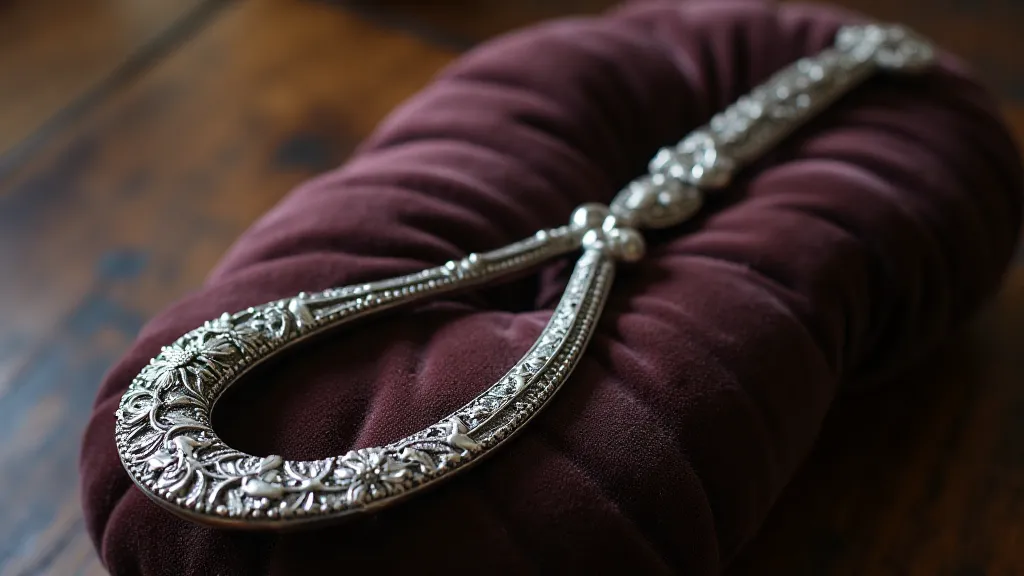
Materials and Craftsmanship: A Reflection of Status
The materials used in the construction of vintage shoehorns were a clear indication of the owner’s social standing. Here's a look at some of the most common and prized materials:
- Mother-of-Pearl: Highly prized for its iridescent beauty, mother-of-pearl shoehorns were considered especially elegant. The swirling colors and lustrous sheen reflected light beautifully.
- Silver: Silver shoehorns, often hallmarked, were a popular choice. They could be plain or intricately decorated with engraved designs, often depicting floral motifs, birds, or other natural elements.
- Gold: Gold shoehorns were the pinnacle of luxury, reserved for the wealthiest and most discerning women.
- Ivory: Carved ivory shoehorns, though now viewed with more ethical considerations, were highly valued for their smoothness and the ability to be finely sculpted.
- Tortoiseshell: The warm, marbled appearance of tortoiseshell added a touch of exoticism and sophistication.
The craftsmanship involved in creating these shoehorns was often exceptional. Skilled artisans employed techniques like engraving, chasing, and repoussé to create stunning details. The handles were frequently adorned with embellishments such as ribbons, tassels, or miniature charms. Some shoehorns were even custom-made, reflecting the individual tastes of their owners. While primarily used for footwear, creative individuals sometimes explored other uses for vintage shoehorns, demonstrating their versatility and ingenuity.
The Opera Box: A Stage for Display
Attending the opera was more than just an evening of entertainment; it was a social ritual. Women carefully planned their outfits, selecting gowns and accessories that would impress their peers. The opera box itself was a stage for display, and a beautifully presented shoehorn was a key element in that presentation.
Imagine a woman seated in her opera box, her gown shimmering under the chandeliers. As the curtain rises, she needs to adjust her footwear. She deftly produces her shoehorn – a tiny jewel of silver or mother-of-pearl – and effortlessly slips on her boots. The subtle action is a demonstration of grace and refinement, further emphasizing her position in society.
The presence of a beautiful shoehorn also provided a discreet signal to servants. It indicated that assistance might be needed with the elaborate process of dressing and undressing, without drawing unwanted attention. It was a subtle language of privilege and comfort.

Collecting Vintage Shoehorns: A Window into the Past
Today, vintage shoehorns offer collectors a unique window into the past. They are tangible reminders of a bygone era when elegance, refinement, and social grace were highly valued. Collecting these accessories allows us to connect with the women who used them, to imagine their lives, and to appreciate the artistry and craftsmanship of a forgotten trade.
While the opera box may no longer be the central hub of high society, the allure of these elegant tools remains. They are not just functional objects; they are miniature works of art, imbued with history and charm. Many people wonder about the stories and origins of these pieces, and whether a particular shoehorn belonged to a famous shoehorn owner, adding another layer of intrigue to the collecting experience.
Identifying and Valuing Vintage Shoehorns
When collecting vintage shoehorns, several factors influence their value:
- Material: Gold and silver shoehorns are generally the most valuable, followed by mother-of-pearl and ivory.
- Craftsmanship: Intricate engravings, chasing, and other decorative details increase the value.
- Hallmarks: Silver and gold shoehorns often bear hallmarks, which can help to identify their origin and age.
- Condition: Well-preserved examples command higher prices.
- Rarity: Unique or unusual designs are more sought after by collectors.
Researching the hallmarks and materials is crucial for determining authenticity and value. Connecting with other collectors and consulting with experts can also be helpful. Finding a reputable dealer is vital when attempting to source these pieces, and understanding where to find vintage shoehorns can be quite a journey in itself.
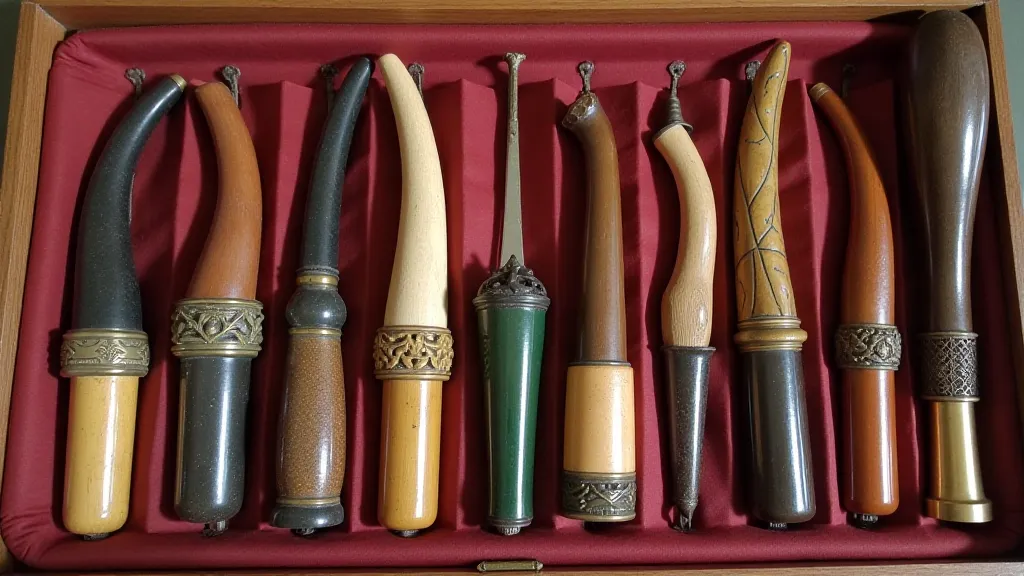
The Evolution of Shoehorn Design and Use
The history of the shoehorn isn’t a straightforward linear progression. Early iterations were often quite rudimentary, simple pieces of wood or bone designed purely for functionality. As fashion evolved, and particularly as women’s footwear became more complex, the shoehorn itself began to transform. The rise of button-up boots in the 19th century directly spurred the development of more elaborate and decorative shoehorns. Think of it as a symbiotic relationship – the demands of fashion drove the innovation in shoehorn design.
The move from basic tools to miniature works of art reflects a broader shift in societal values. In the Victorian era and the early 20th century, outward displays of wealth and refinement were considered important social markers. A beautifully crafted shoehorn, even more than the shoes it assisted in donning, became a symbol of status and sophistication.
Beyond Wealth: The Social Significance of the Shoehorn
While undoubtedly a luxury item, the shoehorn also held a subtle but important social significance. It was more than just a tool; it was a silent communicator. For women navigating the complex social rituals of the era, the shoehorn could serve as a discreet signal to household staff. Its presence subtly indicated the need for assistance, a silent acknowledgement of the elaborate process of dressing and undressing without drawing unwanted attention.
Furthermore, the act of producing a beautifully crafted shoehorn could be a calculated demonstration of grace and refinement. In a world where appearances were paramount, even the smallest details mattered. A woman's ability to effortlessly manage her footwear, assisted by an elegant accessory, reflected her social poise and sophistication.
Conclusion
The vintage shoehorn, once a vital accessory for attending the opera and other high-society events, offers a fascinating glimpse into a bygone era. Its evolution from a practical tool to a symbol of status and elegance reflects the changing social dynamics of the late 19th and early 20th centuries. Today, these charming objects offer collectors a unique opportunity to connect with history, appreciate artistry, and celebrate the enduring appeal of vintage accessories.
